Exploring the Royal Ontario Museum: A Treasure Trove of History and Art
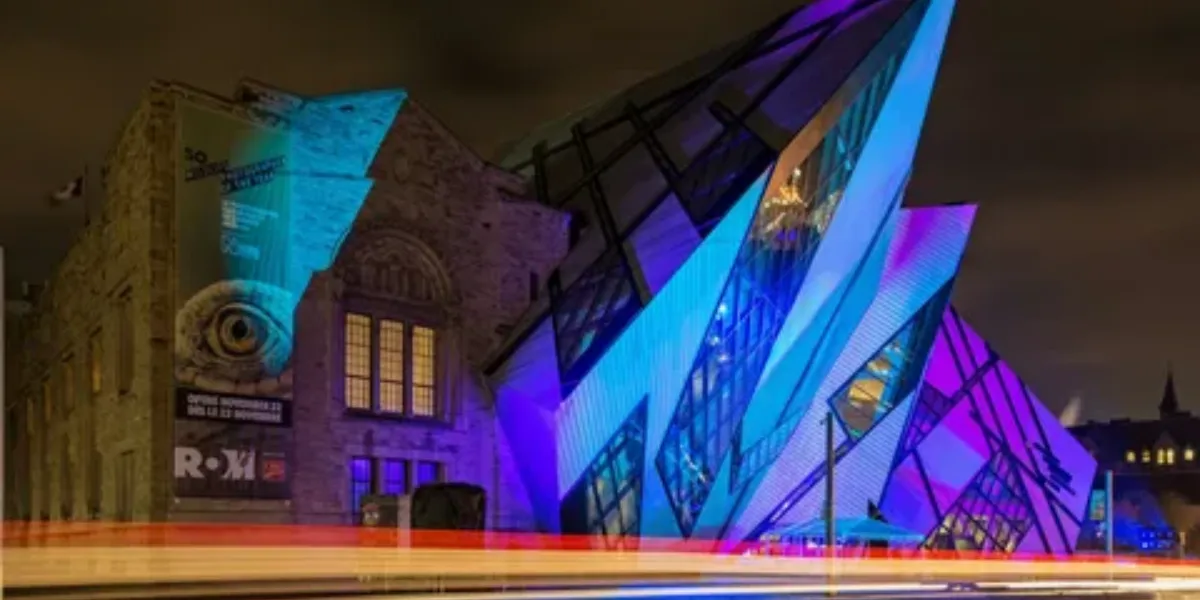
Table of Contents
ToggleToronto Culture: 5 Of The Best Attractions The Royal Ontario Museum (ROM), located in the heart of Toronto, is one of the largest and most comprehensive museums in North America. It serves as a cultural and educational landmark, drawing visitors from around the world to explore its vast and diverse collections. Here’s a deeper look into what makes the ROM a must-visit attraction:
Extensive Collections:
The ROM boasts an impressive array of exhibits, including natural history, world cultures, and art. With over six million items, visitors can find everything from dinosaur fossils and ancient Egyptian artifacts to Canadian indigenous art and contemporary pieces.
Diverse Exhibitions:
The museum hosts a variety of temporary and permanent exhibitions that cater to a wide range of interests. These exhibitions often delve into topics such as biodiversity, paleontology, archaeology, and modern art, providing an educational experience for all ages.
Architectural Marvel:
The ROM is not just known for its collections but also for its striking architecture. The Michael Lee-Chin Crystal, designed by architect Daniel Libeskind, is a modern addition to the historic building, creating a stunning blend of old and new.
Interactive Experiences:
The museum offers numerous interactive and hands-on exhibits, making it an engaging destination for families and school groups. Programs such as guided tours, workshops, and special events provide deeper insights into the exhibits.
Educational Programs:
The ROM is dedicated to education and offers various programs and resources for students, educators, and researchers. These programs aim to foster a deeper understanding of the world’s natural and cultural heritage.
Cultural Significance:
The ROM plays a vital role in preserving and showcasing the diverse cultures that make up Canada’s heritage. Its collections and exhibitions reflect the multicultural fabric of Toronto and Canada, promoting cultural awareness and appreciation.
Accessibility:
The museum is committed to being accessible to all visitors. With facilities and programs designed for people with disabilities, the ROM ensures an inclusive experience for everyone.
Visiting the Royal Ontario Museum provides a rich and immersive journey through history and art, making it a cornerstone of Toronto’s cultural landscape. Whether you’re a history buff, an art enthusiast, or simply looking for an educational outing, the ROM offers something for everyone.
A Day at the Art Gallery of Ontario: Masterpieces and Modern Marvels
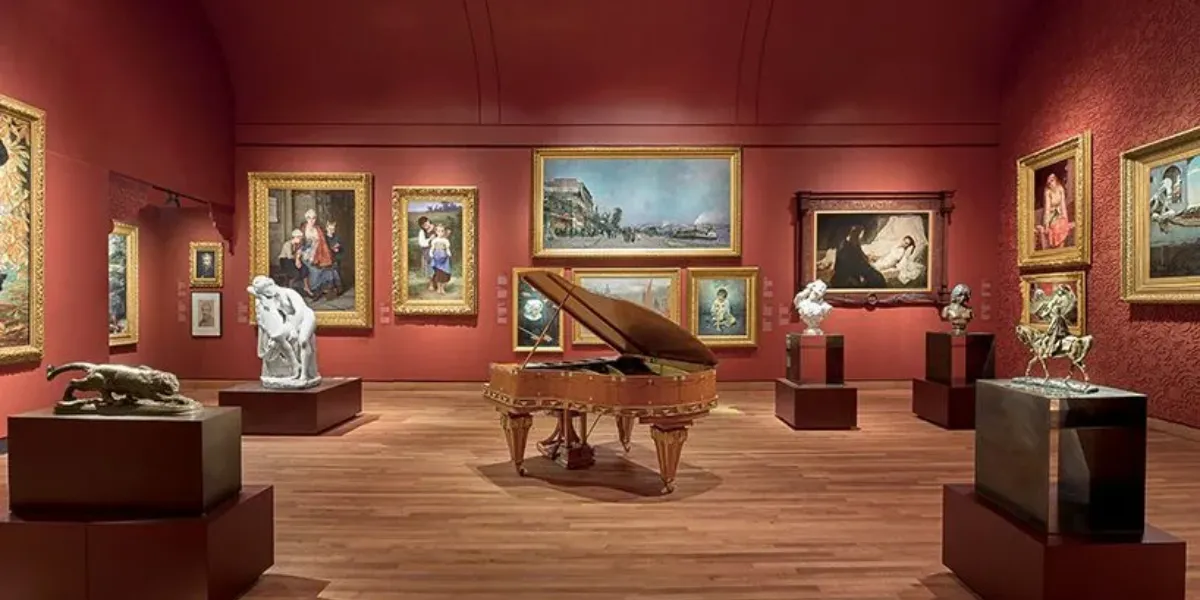
The Art Gallery of Ontario (AGO) is one of Canada’s most distinguished art museums, located in downtown Toronto. It offers a vast collection of artworks ranging from classic masterpieces to cutting-edge contemporary pieces. Here’s a detailed look at what makes a visit to the AGO a captivating experience:
Diverse Collections:
The AGO houses over 90,000 works of art, encompassing a wide range of periods, styles, and cultures. The collection includes European masterpieces, Canadian art, contemporary works, and significant pieces from Indigenous artists.
Renowned Masterpieces:
Art lovers can admire works by renowned artists such as Vincent van Gogh, Pablo Picasso, Claude Monet, and Peter Paul Rubens. The European collection is particularly notable, featuring classic pieces that have shaped art history.
Contemporary Marvels:
The AGO is also a hub for contemporary art, showcasing works by modern artists who push the boundaries of creativity. The contemporary collection includes paintings, sculptures, installations, and new media art that reflect current trends and issues in the art world.
Canadian Art:
The AGO boasts one of the most comprehensive collections of Canadian art. It features works by the Group of Seven, a renowned group of Canadian landscape painters, as well as pieces by contemporary Canadian artists that explore the country’s diverse cultural landscape.
Indigenous Art:
The gallery places a strong emphasis on Indigenous art, highlighting the rich artistic traditions of Canada’s First Nations, Inuit, and Métis peoples. These collections offer a profound insight into Indigenous cultures and histories.
Architectural Wonder:
The AGO’s building itself is a work of art. The museum underwent a major expansion designed by renowned architect Frank Gehry, a Toronto native. The innovative design seamlessly blends historical and modern architectural elements, creating a visually stunning space.
Interactive Programs:
The AGO offers a variety of interactive programs and workshops for visitors of all ages. These include guided tours, art classes, and family-friendly activities that encourage creativity and engagement with the art.
Special Exhibitions:
The gallery hosts numerous special exhibitions throughout the year, often featuring loaned works from other major museums or thematic displays curated by the AGO. These exhibitions provide fresh and exciting perspectives on art.
Educational Initiatives:
The AGO is dedicated to education, offering extensive resources for students, educators, and researchers. Programs such as art talks, lectures, and school tours aim to deepen the public’s understanding and appreciation of art.
Community Engagement:
The AGO is actively involved in the local community, offering outreach programs and collaborating with local artists and organizations. These efforts help make art accessible to a broader audience and foster a vibrant cultural community in Toronto.
Spending a day at the Art Gallery of Ontario allows visitors to immerse themselves in a rich tapestry of artistic expression, from timeless masterpieces to innovative modern works. The AGO’s diverse offerings make it a key cultural destination in Toronto, appealing to art enthusiasts, families, and casual visitors alike.
Strolling Through Distillery District: A Historic and Cultural Gem
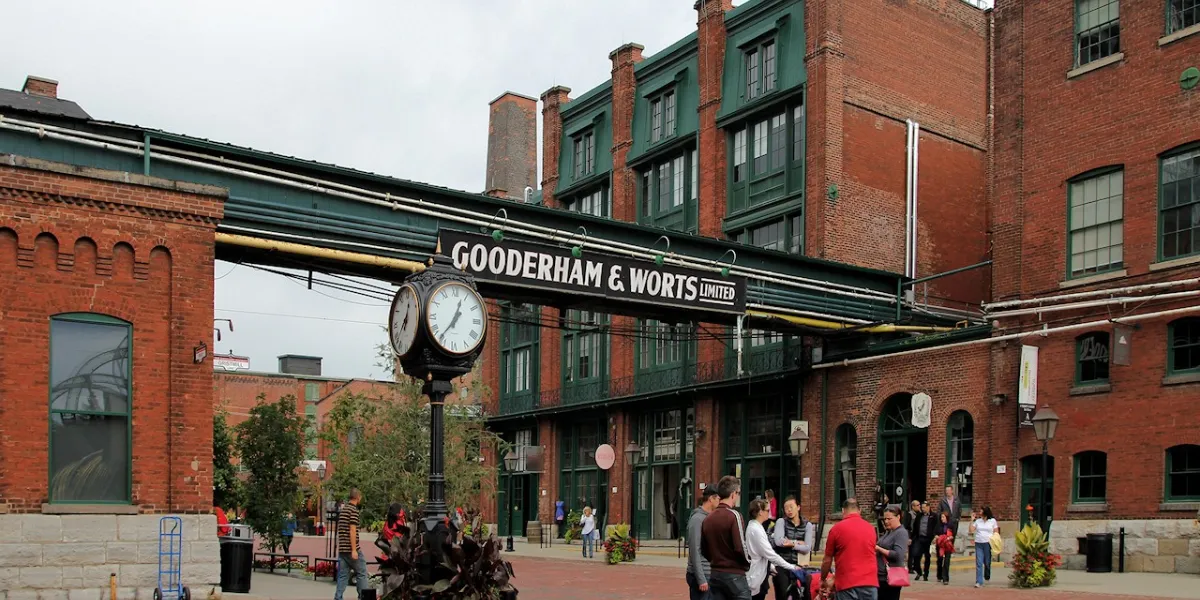
The Distillery District, located in downtown Toronto, is a vibrant neighborhood known for its historic architecture, cultural events, and eclectic mix of shops and eateries. Here’s an in-depth look at what makes the Distillery District a must-visit destination:
Historic Significance:
The Distillery District is a designated National Historic Site, originally founded in the early 19th century as the Gooderham and Worts Distillery. At its peak, it was the largest distillery in the British Empire. The area’s preserved Victorian industrial architecture offers a glimpse into Toronto’s industrial past.
Pedestrian-Friendly:
The district is a pedestrian-only zone, allowing visitors to leisurely stroll through its cobblestone streets without the interference of traffic. This creates a relaxed and immersive experience, perfect for exploring the area’s unique offerings.
Art and Culture:
The Distillery District is a hub for arts and culture, featuring numerous galleries, studios, and public art installations. Visitors can enjoy contemporary art exhibitions, live performances, and even participate in art workshops. The district is also home to several theaters and music venues.
Boutique Shopping:
The area is known for its boutique shops, offering a wide range of unique and artisanal goods. From handcrafted jewelry and fashion to specialty food items and home décor, the Distillery District is a haven for shoppers looking for one-of-a-kind items.
Culinary Delights:
The district boasts a diverse array of restaurants, cafes, and bars. Visitors can savor everything from gourmet cuisine and craft beers to artisanal chocolates and specialty coffees. Many establishments feature outdoor patios, perfect for dining al fresco in a charming setting.
Seasonal Festivals and Events:
The Distillery District hosts numerous events and festivals throughout the year, attracting both locals and tourists. Highlights include the annual Toronto Christmas Market, which transforms the area into a festive wonderland, and the Distillery Winter Village, which features holiday-themed activities and markets.
Historical Tours:
Guided tours are available for those interested in the rich history of the district. These tours offer fascinating insights into the area’s industrial heritage, architectural features, and cultural evolution over the decades.
Film and Television Location:
The Distillery District’s unique aesthetic has made it a popular filming location for movies and TV shows. Fans of various films and series can recognize the distinctive backdrop in numerous productions.
Community Engagement:
The district is committed to fostering a sense of community, with various initiatives and programs that engage local residents and visitors. These include public art projects, community events, and partnerships with local organizations.
Modern Amenities:
While the Distillery District retains its historic charm, it also offers modern amenities such as Wi-Fi hotspots, public restrooms, and accessible pathways, ensuring a comfortable visit for everyone.
Strolling through the Distillery District offers a perfect blend of history, culture, and modernity. Whether you’re interested in art, shopping, dining, or simply soaking up the historic atmosphere, the district provides a rich and engaging experience that captures the essence of Toronto’s cultural heritage.
Immersive Experiences at the Ontario Science Centre
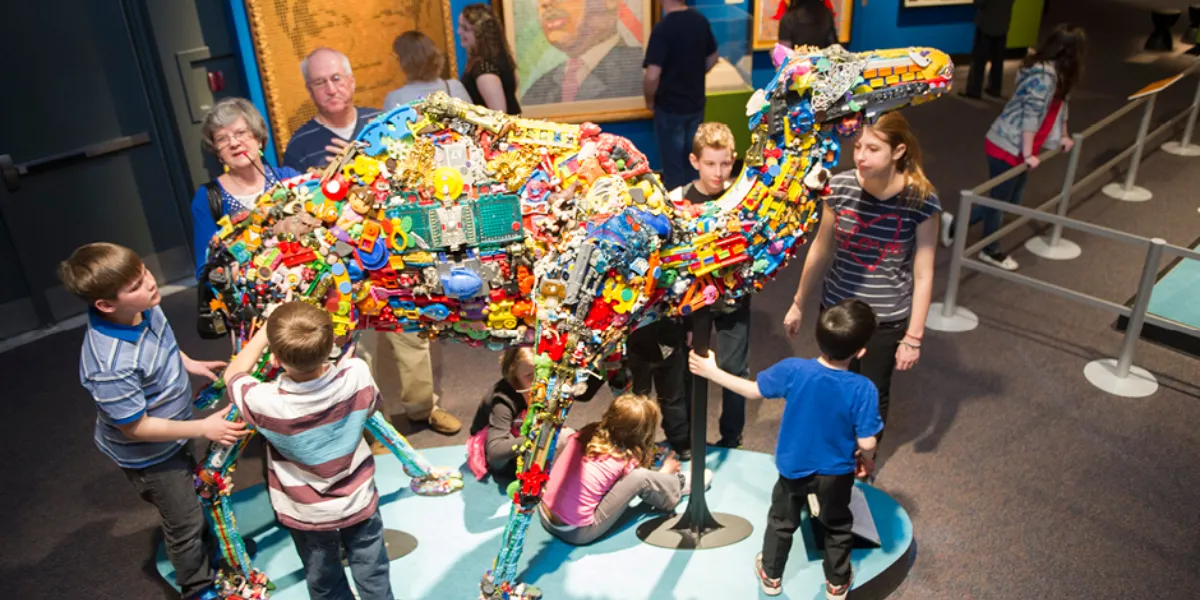
The Ontario Science Centre, located in Toronto, is a premier destination for science enthusiasts and curious minds of all ages. Renowned for its hands-on and interactive exhibits, the center provides a deep dive into various scientific fields, making learning both fun and engaging. Here’s a detailed exploration of what makes the Ontario Science Centre an unforgettable experience:
Interactive Exhibits:
The Ontario Science Centre is famous for its interactive exhibits that invite visitors to engage directly with scientific concepts. From touching live sea creatures to experimenting with physics principles, the hands-on approach makes science tangible and exciting.
Live Demonstrations:
The center offers daily live demonstrations and shows that cover a wide range of scientific topics. These demonstrations often involve spectacular experiments and presentations by knowledgeable staff, helping to illustrate complex scientific ideas in an accessible way.
Planetarium and Space Exploration:
The Science Centre features a planetarium where visitors can embark on a journey through the cosmos. Shows about stars, planets, and galaxies provide a mesmerizing view of outer space, complemented by exhibits on space exploration and astronomy.
Nature and Environment:
Exhibits focused on natural science and the environment allow visitors to learn about ecosystems, wildlife, and conservation efforts. Interactive displays about the human impact on the environment emphasize the importance of sustainability and responsible stewardship of our planet.
Health and Human Body:
The center has dedicated areas exploring human biology and health. Interactive models and simulations provide insights into how our bodies work, the importance of nutrition and exercise, and advancements in medical science.
Technology and Innovation:
Exhibits on technology and innovation showcase the latest advancements in various fields, such as robotics, artificial intelligence, and renewable energy. Visitors can see cutting-edge technology in action and understand its potential impact on the future.
Kid Spark:
Designed specifically for children aged eight and under, KidSpark is a vibrant, child-friendly zone that encourages exploration and discovery through play. Activities and exhibits are tailored to young minds, fostering a love for science from an early age.
IMAX Theatre:
The Ontario Science Centre houses an IMAX theatre that screens educational and visually stunning films on a giant screen. These films cover topics like natural history, space exploration, and wildlife, providing an immersive cinematic experience.
Special Exhibitions:
The center regularly hosts special exhibitions that delve into specific scientific themes or showcase traveling exhibits from around the world. These temporary displays offer new and unique learning opportunities with each visit.
Educational Programs:
The Science Centre offers a range of educational programs and workshops for students, teachers, and the general public. These programs include science camps, teacher training, and outreach initiatives that extend the center’s educational impact beyond its walls.
Community Engagement:
The Ontario Science Centre actively engages with the community through various initiatives, such as free admission days, special events, and partnerships with local organizations. These efforts ensure that science education is accessible to a broader audience.
Visiting the Ontario Science Centre is an immersive journey into the wonders of science. With its dynamic exhibits, engaging demonstrations, and educational programs, the center inspires curiosity, fosters learning, and sparks a lifelong interest in science and technology. Whether you’re a child exploring KidSpark or an adult marveling at the latest technological innovations, the Ontario Science Centre offers something for everyone.
Cultural Performances at the Four Seasons Centre for the Performing Arts
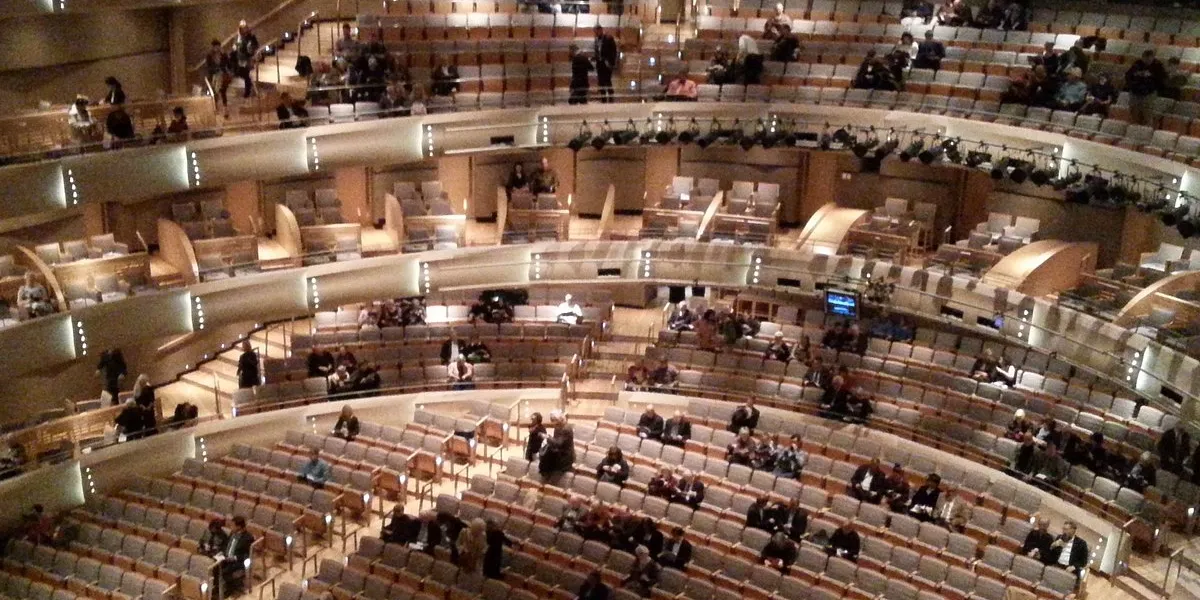
The Four Seasons Centre for the Performing Arts, located in downtown Toronto, is a premier venue renowned for its world-class cultural performances. As home to the Canadian Opera Company and the National Ballet of Canada, the Centre plays a vital role in the city’s vibrant arts scene. Here’s an in-depth look at what makes the Four Seasons Centre a cultural gem:
Architectural Marvel:
The Four Seasons Centre is an architectural masterpiece designed by Jack Diamond. Its modern design combines functionality with aesthetic beauty, featuring state-of-the-art acoustics and an elegant interior. The “City Room,” a glass-enclosed atrium, offers stunning views of downtown Toronto and serves as a welcoming space for visitors.
Opera Performances:
The Canadian Opera Company (COC), one of the largest and most respected opera companies in North America, regularly stages performances at the Four Seasons Centre. The COC’s productions range from classic operas by composers like Mozart and Verdi to contemporary works, showcasing a diverse repertoire that appeals to a wide audience.
Ballet Performances:
The National Ballet of Canada, another esteemed resident company, presents a variety of ballets, from timeless classics like “Swan Lake” and “The Nutcracker” to innovative modern pieces. The Centre’s design enhances the viewing experience, allowing audiences to fully appreciate the artistry and athleticism of ballet.
World-Class Acoustics:
The Four Seasons Centre is renowned for its exceptional acoustics, which are crucial for delivering high-quality performances. The venue’s design ensures that sound travels clearly and evenly throughout the auditorium, providing an immersive auditory experience for every audience member.
Diverse Programming:
Beyond opera and ballet, the Four Seasons Centre hosts a variety of other cultural performances, including concerts, recitals, and theatrical productions. This diversity in programming ensures that there is something for everyone, from classical music enthusiasts to fans of contemporary theatre.
Educational Initiatives:
The Centre is committed to fostering a love for the performing arts through educational programs and outreach initiatives. These include school visits, workshops, and community programs designed to engage and inspire young audiences and emerging artists.
Special Events and Festivals:
The Four Seasons Centre often hosts special events and festivals that celebrate various aspects of the performing arts. These events provide opportunities for audiences to experience unique performances and participate in cultural celebrations.
Accessibility:
The Centre is designed to be accessible to all visitors, with features such as wheelchair seating, assistive listening devices, and services for patrons with visual or hearing impairments. This commitment to accessibility ensures that everyone can enjoy the cultural offerings at the venue.
Support for Canadian Talent:
The Four Seasons Centre plays a crucial role in supporting and showcasing Canadian talent. Both the Canadian Opera Company and the National Ballet of Canada prioritize the development and promotion of Canadian artists, composers, choreographers, and directors, contributing to the growth of the national arts scene.
Community Engagement:
The Centre actively engages with the local community through partnerships with schools, community groups, and other cultural organizations. These efforts help to make the performing arts more accessible and foster a deeper connection between the Centre and the people of Toronto.
Audience Experience:
From the moment visitors enter the Four Seasons Centre, they are treated to an exceptional experience. The venue’s thoughtful design, comfortable seating, and elegant atmosphere contribute to a memorable outing, whether attending a grand opera, a captivating ballet, or a special event.
Attending a cultural performance at the Four Seasons Centre for the Performing Arts is more than just a night out; it’s an enriching experience that celebrates the beauty and power of the performing arts. With its world-class productions, stunning architecture, and commitment to accessibility and education, the Centre is a cornerstone of Toronto’s cultural landscape, offering unforgettable experiences for both residents and visitors.
Discovering the Diverse Culinary Scene at Kensington Market
Kensington Market, located in the heart of Toronto, is one of the city’s most vibrant and eclectic neighborhoods. Known for its multicultural atmosphere, the market is a haven for food lovers, offering a diverse array of culinary delights. Here’s an in-depth look at what makes Kensington Market a must-visit destination for discovering global flavors:
Multicultural Cuisine:
Kensington Market is a microcosm of Toronto’s diverse population, featuring food from around the world. Visitors can find everything from Mexican tacos and Jamaican patties to Portuguese pastries and Vietnamese pho. The market’s variety reflects the rich cultural mosaic of the city.
Street Food and Food Stalls:
The market is famous for its street food vendors and food stalls, which offer quick and delicious bites. These stalls provide an opportunity to sample a wide range of dishes without the formality of a sit-down restaurant. Popular options include empanadas, dumplings, and artisanal ice cream.
Unique Restaurants and Cafés:
Kensington Market is home to numerous unique and independent restaurants and cafés. These establishments often focus on fresh, locally-sourced ingredients and innovative culinary techniques. Visitors can enjoy gourmet burgers, vegan delicacies, and fusion dishes that blend different culinary traditions.
Specialty Food Shops:
The market features a variety of specialty food shops that cater to specific culinary needs. From cheese mongers and butcher shops to spice stores and organic grocers, these shops offer high-quality products that are perfect for home cooking or special occasions.
International Groceries:
Kensington Market’s grocery stores are stocked with international products that can be hard to find elsewhere in the city. These stores offer ingredients for Asian, Latin American, Middle Eastern, and European cuisines, making it easy for home cooks to create authentic dishes.
Vibrant Food Culture:
The atmosphere in Kensington Market is lively and welcoming, with an emphasis on community and shared experiences. Street musicians, artists, and performers often add to the vibrant ambiance, creating a festive environment that enhances the culinary exploration.
Farmers’ Markets:
On select days, the market hosts farmers’ markets where local farmers and producers sell fresh produce, baked goods, and homemade preserves. These markets provide an excellent opportunity to support local agriculture and enjoy seasonal ingredients.
Ethnic Bakeries:
The market’s bakeries offer a delightful array of breads, pastries, and sweets from various cultures. Whether you’re craving a French croissant, an Italian cannoli, or a Middle Eastern baklava, Kensington Market’s bakeries have something to satisfy every sweet tooth.
Food Tours:
For those looking to delve deeper into the market’s culinary offerings, food tours are available. These guided tours take visitors to the best spots in the market, providing tastings and insights into the history and culture behind the food.
Culinary Events and Festivals:
Kensington Market regularly hosts culinary events and festivals that celebrate food and culture. Events such as Pedestrian Sundays, where the streets are closed to traffic, allow visitors to explore the market on foot and enjoy street performances, food stalls, and pop-up shops.
Health and Wellness Options:
The market caters to various dietary preferences and needs, offering plenty of options for vegetarians, vegans, and those seeking gluten-free or organic products. Health-conscious visitors can find nutritious and delicious meals that align with their lifestyle.
Cultural Heritage:
Kensington Market’s culinary scene is deeply tied to its cultural heritage. The neighborhood has a rich history of immigration, and this diversity is reflected in the food offerings. Many family-owned businesses have been serving traditional dishes for generations, preserving and sharing their culinary traditions.
Exploring Kensington Market is a culinary adventure that offers a taste of Toronto’s rich multicultural tapestry. Whether you’re sampling street food, dining at a cozy café, or shopping for unique ingredients, the market’s diverse culinary scene promises a delightful and memorable experience.
Unwinding at Toronto Islands: A Natural and Recreational Escape
The Toronto Islands, located just off the shore of downtown Toronto, offer a serene and picturesque escape from the bustling city. Comprising a chain of small islands, this destination provides a blend of natural beauty and recreational activities, making it a perfect getaway for locals and tourists alike. Here’s a detailed look at what makes the Toronto Islands an ideal spot for relaxation and fun:
Natural Beauty:
The Toronto Islands boast lush greenery, beautiful gardens, sandy beaches, and stunning waterfront views. The islands’ natural landscapes offer a peaceful retreat where visitors can enjoy the sights and sounds of nature.
Beaches:
Several beaches on the islands provide opportunities for swimming, sunbathing, and picnicking. Hanlan’s Point Beach, Centre Island Beach, and Ward’s Island Beach are popular spots where visitors can relax on the sand and take a dip in the refreshing waters of Lake Ontario.
Recreational Activities:
The Toronto Islands offer a wide range of recreational activities for all ages. Visitors can rent bicycles, kayaks, and paddleboards to explore the islands at their own pace. There are also tennis courts, volleyball courts, and ample space for outdoor games and sports.
Centerville Amusement Park:
Centre Island is home to Centerville Amusement Park, a family-friendly attraction with rides, games, and a petting zoo. The park offers classic amusement rides such as the Ferris wheel, carousel, and log flume, providing fun for children and adults alike.
Tranquil Walking and Biking Trails:
The islands feature numerous walking and biking trails that meander through scenic areas, offering a peaceful way to explore the natural surroundings. Trails like the Island Tram Tour and the Boardwalk Trail provide picturesque routes for leisurely strolls or bike rides.
Picnic Areas and BBQ Facilities:
Designated picnic areas and BBQ facilities are scattered throughout the islands, making them perfect for family gatherings, group outings, and casual picnics. Visitors can bring their own food or purchase snacks from various vendors on the islands.
Bird Watching and Wildlife:
The Toronto Islands are a haven for bird watchers and nature enthusiasts. The islands’ diverse habitats attract a variety of bird species, making it an excellent spot for birdwatching. Other wildlife, such as rabbits and turtles, can also be spotted in their natural environments.
Ferry Rides:
The journey to the Toronto Islands begins with a scenic ferry ride from the mainland. The ferries provide stunning views of Toronto’s skyline and Lake Ontario, adding to the overall experience. The ferry ride itself is a relaxing way to start and end the island adventure.
Historical Sites and Landmarks:
The islands have several historical sites and landmarks, including the Gibraltar Point Lighthouse, one of the oldest existing lighthouses on the Great Lakes. Exploring these sites offers a glimpse into the islands’ rich history and heritage.
Gardens and Parks:
Beautifully maintained gardens and parks on the islands, such as Franklin Children’s Garden and the William Meany Maze, provide serene spaces for relaxation and exploration. These areas are perfect for enjoying a quiet moment amidst nature.
Events and Festivals:
The Toronto Islands host various events and festivals throughout the year, including outdoor concerts, art installations, and cultural celebrations. These events add a festive atmosphere to the islands and provide entertainment for visitors.
Camping and Overnight Stays:
For those looking to extend their stay, there are options for camping and overnight accommodations on the islands. This allows visitors to fully immerse themselves in the natural beauty and tranquility of the area.
Unwinding at the Toronto Islands offers a perfect blend of natural beauty and recreational activities, providing a refreshing escape from urban life. Whether you’re looking to relax on the beach, explore nature trails, enjoy family-friendly attractions, or simply take in the scenic views, the Toronto Islands offer something for everyone.
Admiring Architectural Beauty at Casa Loma
Casa Loma, a majestic castle located in Toronto, is a prime example of stunning architectural beauty. Built in the early 20th century, this historic landmark offers visitors a glimpse into a bygone era with its grand design, intricate details, and opulent interiors. Here’s an in-depth look at what makes Casa Loma an architectural marvel worth visiting:
Historic Significance:
Casa Loma was constructed between 1911 and 1914 by financier Sir Henry Pellatt. Designed by architect E.J. Lennox, the castle represents a significant period in Toronto’s history, reflecting the wealth and ambition of its early 20th-century elite.
Gothic Revival Architecture:
Casa Loma is an outstanding example of Gothic Revival architecture, characterized by its pointed arches, steeply pitched roofs, and ornate detailing. The castle’s design draws inspiration from European medieval castles, creating a fairytale-like appearance.
Grand Exterior:
The castle’s exterior features impressive stonework, battlements, and turrets, making it a striking landmark. The sweeping views of the city from its elevated position add to the grandeur of its appearance.
Opulent Interiors:
Inside Casa Loma, visitors can admire lavish interiors that include grand staircases, crystal chandeliers, and richly decorated rooms. The Great Hall, with its soaring ceilings and elegant details, is particularly awe-inspiring.
Sumptuous Decor:
Each room in Casa Loma is uniquely decorated, reflecting different historical and cultural influences. From the Italian-inspired Oak Room to the medieval-style Library, the intricate woodwork, stained glass windows, and period furnishings showcase exquisite craftsmanship.
Secret Passages and Tunnels:
Casa Loma is famous for its secret passages and underground tunnels, adding an element of intrigue and mystery. These hidden features were used by Sir Henry Pellatt and his guests and are now a popular attraction for visitors.
Beautiful Gardens:
The castle is surrounded by beautifully manicured gardens, offering a peaceful retreat and picturesque views. The gardens feature a variety of plants, fountains, and sculptures, providing a serene backdrop for the castle’s imposing structure.
Historical Artifacts:
Casa Loma houses numerous historical artifacts, including original furniture, art, and personal items from Sir Henry Pellatt’s collection. These artifacts provide insight into the lifestyle and tastes of the early 20th-century elite.
Architectural Tours:
Guided tours of Casa Loma provide detailed information about its architectural features, history, and the life of Sir Henry Pellatt. These tours offer a deeper appreciation of the castle’s design and historical significance.
Event Venue:
Casa Loma serves as a unique venue for various events, including weddings, corporate functions, and cultural celebrations. The castle’s stunning architecture and elegant interiors make it an unforgettable setting for any occasion.
Film and Media Location:
Casa Loma’s dramatic architecture and opulent interiors have made it a popular filming location for movies, TV shows, and commercials. Visitors may recognize the castle from its appearances in productions such as “X-Men,” “Scott Pilgrim vs. The World,” and “The Tuxedo.”
Seasonal Events:
Casa Loma hosts seasonal events and themed experiences, such as holiday tours, haunted castle events, and historical reenactments. These events highlight different aspects of the castle’s history and architecture, providing a dynamic visitor experience.
Admiring the architectural beauty at Casa Loma offers a journey through time, showcasing the grandeur and elegance of early 20th-century design. Whether you’re exploring its lavish interiors, wandering through its secret passages, or enjoying the serene gardens, Casa Loma provides a captivating experience that highlights Toronto’s architectural heritage.
Engaging with Indigenous Art at the McMichael Canadian Art Collection
The McMichael Canadian Art Collection, located in Kleinburg, Ontario, is renowned for its extensive collection of Canadian art, including significant works by Indigenous artists. Engaging with Indigenous art at the McMichael offers a profound and enriching experience, showcasing the diverse and vibrant cultural heritage of Indigenous peoples in Canada. Here’s an in-depth look at what makes this engagement so meaningful:
Celebration of Indigenous Culture:
The McMichael Canadian Art Collection places a strong emphasis on celebrating and preserving Indigenous culture through its art. The collection includes works from First Nations, Métis, and Inuit artists, highlighting their unique perspectives and artistic traditions.
Diverse Artistic Expressions:
Indigenous art at the McMichael encompasses a wide range of mediums and styles, including traditional beadwork, carvings, prints, paintings, and contemporary installations. This diversity showcases the rich tapestry of Indigenous artistic expression.
Prominent Indigenous Artists:
The collection features works by prominent Indigenous artists such as Norval Morrisseau, Daphne Odjig, and Alex Janvier, among others. These artists are celebrated for their contributions to the art world and their role in bringing Indigenous stories and perspectives to a broader audience.
Cultural Narratives and Stories:
Indigenous art often incorporates cultural narratives, legends, and personal stories. Engaging with these artworks allows visitors to gain a deeper understanding of Indigenous histories, spiritual beliefs, and connections to the land.
Educational Programs and Workshops:
The McMichael offers educational programs and workshops focused on Indigenous art. These programs provide opportunities for visitors to learn directly from Indigenous artists, participate in traditional art-making practices, and gain insights into the cultural significance of the artworks.
Special Exhibitions:
The McMichael regularly hosts special exhibitions dedicated to Indigenous art. These exhibitions often explore specific themes, such as resilience, identity, and the impact of colonization, providing a platform for Indigenous voices and perspectives.
Cultural Collaborations:
The McMichael collaborates with Indigenous communities and organizations to ensure the respectful representation and interpretation of Indigenous art. These collaborations help to foster meaningful connections and mutual understanding between Indigenous and non-Indigenous peoples.
Historical and Contemporary Works:
The collection includes both historical and contemporary Indigenous artworks, offering a comprehensive view of the evolution of Indigenous art over time. This juxtaposition highlights the enduring relevance and innovation of Indigenous artistic practices.
Interpretive Materials:
The McMichael provides interpretive materials, such as exhibition guides, audio tours, and educational panels, to enhance visitors’ understanding of Indigenous art. These resources offer context and background information that enrich the viewing experience.
Public Programming:
The McMichael hosts public programs such as artist talks, panel discussions, and film screenings that focus on Indigenous art and issues. These events provide opportunities for dialogue and learning, fostering greater appreciation and respect for Indigenous cultures.
Support for Emerging Artists:
The McMichael supports emerging Indigenous artists by showcasing their work and providing opportunities for professional development. This support helps to nurture new talent and ensure the continued vitality of Indigenous art.
Community Engagement:
The McMichael engages with Indigenous communities through outreach programs, partnerships, and collaborative projects. These efforts help to build strong relationships and ensure that Indigenous voices are central to the presentation and interpretation of their art.
Engaging with Indigenous art at the McMichael Canadian Art Collection offers a unique and enriching experience that celebrates the creativity, resilience, and cultural heritage of Indigenous peoples in Canada. Through its diverse collection, educational programs, and community collaborations, the McMichael provides a space for meaningful reflection, learning, and appreciation of Indigenous art and culture.
Enjoying Live Music and Festivals at Nathan Phillips Square
Nathan Phillips Square, located in the heart of downtown Toronto, is a vibrant public space that serves as a hub for cultural events, live performances, and festivals throughout the year. Here’s an in-depth look at what makes Nathan Phillips Square a premier destination for enjoying live music and festivals:
Iconic Location:
Situated in front of Toronto City Hall, Nathan Phillips Square is an iconic landmark known for its distinctive architecture, including the iconic “Toronto” sign and the elevated walkways of City Hall.
Amphitheatre and Stage:
The square features an outdoor amphitheatre and stage, which serve as the focal point for live music performances, concerts, and cultural festivals. The stage provides a platform for local and international artists to showcase their talents to a diverse audience.
Summer Concert Series:
Nathan Phillips Square hosts a popular summer concert series that features a diverse lineup of musical genres, including jazz, blues, world music, and indie rock. These free concerts attract music lovers of all ages and backgrounds, creating a lively atmosphere in the square.
Cultural Festivals:
Throughout the year, Nathan Phillips Square hosts a variety of cultural festivals that celebrate the city’s diversity and heritage. These festivals showcase music, dance, food, and art from different cultures around the world, providing opportunities for cultural exchange and appreciation.
New Year’s Eve Celebration:
Nathan Phillips Square is home to Toronto’s annual New Year’s Eve celebration, which draws thousands of revelers to ring in the new year. The event features live music performances, DJ sets, fireworks, and the iconic countdown to midnight, making it a highlight of the city’s social calendar.
Winter Programming:
In the winter months, Nathan Phillips Square transforms into a winter wonderland with the addition of the Cavalcade of Lights festival and the Toronto Christmas Market. These festive events feature live music, seasonal performances, ice skating, and holiday-themed attractions, bringing joy to visitors of all ages.
Public Art Installations:
The square often hosts temporary art installations and exhibitions that enhance the cultural experience for visitors. These installations showcase the work of local and international artists and provide opportunities for public engagement and interaction.
Accessibility:
Nathan Phillips Square is accessible to all visitors, with features such as ramps, elevators, and accessible seating areas. The square is designed to accommodate people of all abilities, ensuring that everyone can enjoy the live music and festivals hosted in the space.
Community Engagement:
The square serves as a gathering place for the local community, hosting events that bring people together and foster a sense of belonging. Community groups, schools, and organizations often participate in programming at Nathan Phillips Square, contributing to its vibrant and inclusive atmosphere.
Historic Significance:
Named after former Toronto Mayor Nathan Phillips, the square has historical significance as a symbol of civic pride and unity. It has been the site of numerous historic events, protests, and celebrations throughout the city’s history, adding to its cultural importance.
Food and Refreshments:
During events and festivals, food vendors and beverage stands offer a variety of culinary delights and refreshments for visitors to enjoy. From local food trucks to international cuisine, there’s something to satisfy every palate at Nathan Phillips Square.
Green Spaces:
The square features landscaped green spaces, gardens, and seating areas where visitors can relax and enjoy the outdoor atmosphere. These green spaces provide a tranquil retreat amidst the urban hustle and bustle of downtown Toronto.
Enjoying live music and festivals at Nathan Phillips Square offers a dynamic and immersive cultural experience that celebrates the diversity, creativity, and vibrancy of Toronto’s arts scene. Whether you’re dancing to the rhythm of a live band, exploring the sights and sounds of a cultural festival, or simply soaking up the atmosphere with friends and family, Nathan Phillips Square provides a memorable and enriching experience for all who visit.
Click here for more visited Posts!






















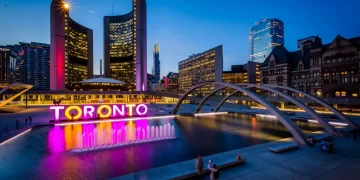
















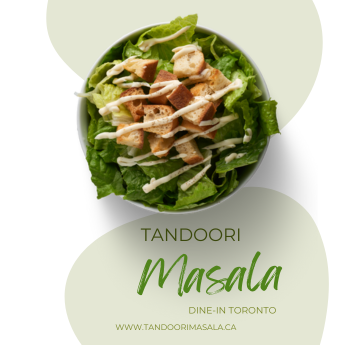
Discussion about this post